Mulholland’s Pipe Dream
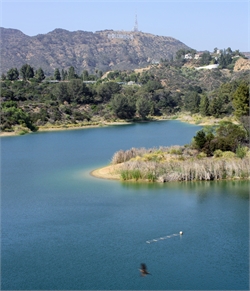 California is in the fourth year of a severe drought yet sprinklers still go off at four in the morning, swimming pools shimmer in the morning sun, and Angelinos complain when the occasional and much needed rain does fall. Is there really a water problem for this concrete jungle? Most definitely and it’s nothing new. Mother nature simply did not intend for 3.9 million people to live in this 469 square mile parcel of desert.
California is in the fourth year of a severe drought yet sprinklers still go off at four in the morning, swimming pools shimmer in the morning sun, and Angelinos complain when the occasional and much needed rain does fall. Is there really a water problem for this concrete jungle? Most definitely and it’s nothing new. Mother nature simply did not intend for 3.9 million people to live in this 469 square mile parcel of desert.
In 1850, when Los Angeles was incorporated as a city the population was 1,610 people and water was already a source of contention. By 1860 Los Angeles had a water distribution system in place for her population of 4,385 people. Wells had been drilled and water was being taken from the Los Angeles River via a system of ditches and water wheels. There was not much growth between 1860 and 1870, but after the War between the States, the population once more began to soar. It doubled to 11,183 people in 1880, then to 50,395 in 1890 severely taxing the city’s ability to keep up with the water demands.
These numbers do not include the municipalities outside the city limits. Ten miles to the east, our own Hollywood was also a growing community digging wells and diverting the river. However, ownership of the water in the Los Angeles River was granted in perpetuity to the Pueblo at its founding by King Carlos III of Spain and litigation was brought against the city of Hollywood to prevent the diversion of water from the LA River. There was talk of annexation by Los Angeles of surrounding areas but that was opposed if the surrounding area had a population that would make additional demand upon the water supply. More wells were drilled, but in the end the City of Los Angeles claimed all the ground water pumped out of thousands of wells in addition to all the river water. It was only a matter of time before Hollywood wisely voted to become part of Los Angeles in order to access the water and the sewer system.
(See http://dpw.lacounty.gov/general/wells/ and click “inactive” and “active” wells to get an overview of just how many wells were out there).
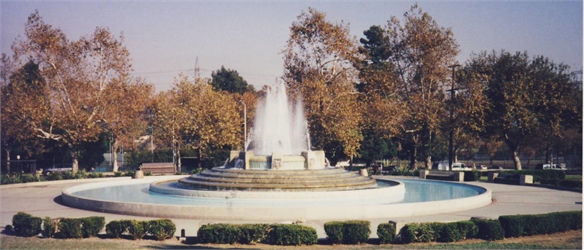
At the entrance to Griffith Park at Los Feliz Boulevard and Riverside Drive is the William Mulholland Memorial Fountain dedicated to a self-educated engineering genius whose vision and temerity made possible this city of dreams we know today.
William Mulholland ran away from home when he was 15 after his father had beaten him for getting bad grades in school. He arrived in California in 1877 and got a job digging a well (before the city claimed control of the water just about every parcel of land had one if not connected to a ditch.) Mulholland next obtained a job from Fred Eaton, then superintendent of the Los Angles Water company, as the as the Deputy Zanjero (the tender of the water ditch). By 1886, the 31 year old Irishman had himself risen to superintendent of the newly establish Los Angeles Water Department and supervised the laying of the first iron water pipe.
Fred Eaton was elected mayor of Los Angeles in 1898 and in 1899, a $2.09 million bond measure, approved by city voters provided for the purchase of Los Angeles City Water Company’s system. In 1900 the population had doubled again to 102,479. Though reservoirs and distribution mains were constructed and meters were installed to try to get the locals to conserve, the water situation continued to be dire. Both Eaton and Muholland expected the city population to grow. Mullhulland expected that by 1925 the city population would be 390,000 (He was off by 400%.). His focus was water. In 1902 the Water Department came under city control and Mulholland continued as superintendent.
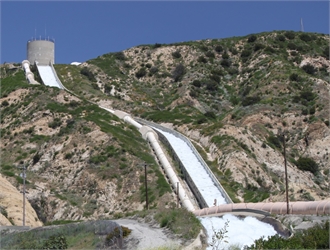
Men of vision, Eaton and Mulhullond saw an opportunity to bring water down from the eastern Sierra Nevada. Machinations ensued. The movie China Town gives some of the shady back story to getting the funding necessary to launch the scheme to get the funding. Fred Eaton proved to be rather self serving and attempted to get rich with his insider deals. The self educated Mulhulland came up with a pipe dream and convinced the city fathers that he could design and build a 233 long aqueduct that would gravity feed water to the thirsty city. In 1905, citizens of Los Angeles approved a bond issue of $1.5 million to purchase Owens Valley lands and water rights. Two years later, a second bond issue of $23 million provide for construction. (This instigated the California water wars, but that’s another topic.)
Under Mulhulland’s direction, a team of over 5,000 men blasted and drilled 142 tunnels totaling more than 43 miles in length, built 34 miles of open unlined channel, 39 miles of concrete lined channel, 98 miles of covered conduit, and three reservoirs. They finished twenty months early and under budget. It should be noted that 23 men lost their lives in the project. The sluice was opened in 1913 and the water still flows. Mullhulland was the hero of the day and the aqueduct remains a marvel of engineering.
9955.jpg)
Mulholland Dam, Lake Hollywood. Photo by Ted Goldstein
Between 1921 to 1929 Mulhulland oversaw the construction of five more reservoirs and expanded the water system of Los Angeles by hundreds of miles. His reign as the golden boy came to an end in 1928 when the San Francisquito Dam failed and 450 to 600 people were killed just hours after he had examined it a declared it safe. Mullhulland immediately ordered the water in the Hollywood Dam to be lowered because it was of the same design. Mulhulland took full responsibility and resigned a broken man. It wasn’t until the 1990’s when it was found that the San Francisquito Dam had been built on a fault and there was no way with the technology of 1928 that he could have known that that his reputation was exonerated.
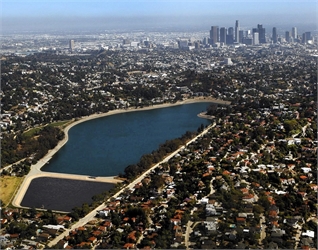
Today 34% of LA’s water comes from the Sierra Nevada. Los Angeles also purchases 53% of her water (Bay Delta and Colorado River). Ground water accounts for 12% and recycled water only 1%. The population continues to grow and drought or no drought, we live in a desert. Los Angeles is not an Oasis. But through the planning and efforts of the Los Angeles Department of Water and Power, Los Angeles uses less water than she did 40 years ago despite an increase in population of more than 1.3 million people.
(Left) Silver Lake.
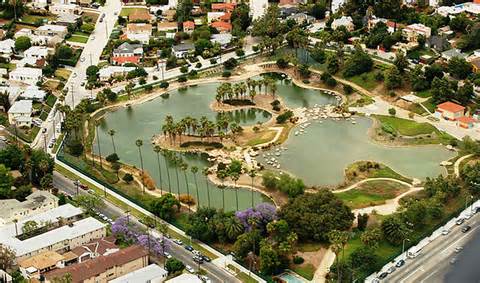
(Below)Rowena Reservoir